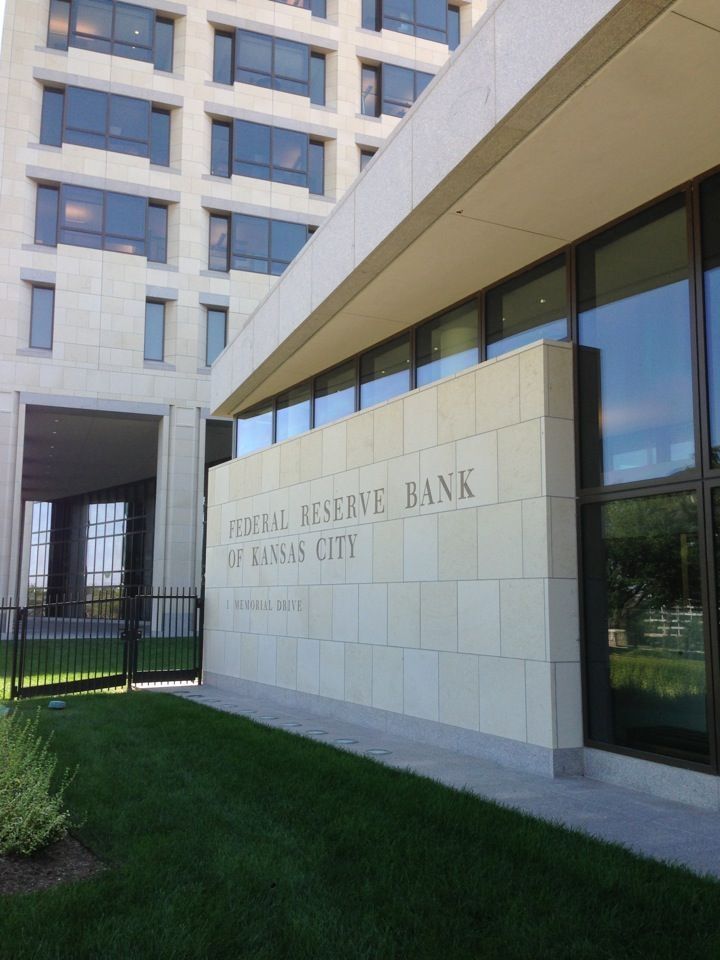Fed Beige Book: CRE Varied Across Districts

Overall Economic Activity
Economic activity expanded at a modest to moderate rate over the past several weeks, according to the majority of Federal Reserve Districts. The St. Louis and Kansas City Districts, however, reported no change during this period. Consumer spending generally picked up, but growth was uneven across the nation, including mixed reports of auto sales. Overall, growth in tourism was flat to modest. There were indications that the coronavirus was negatively impacting travel and tourism in the U.S. Manufacturing activity expanded in most parts of the country; however, some supply chain delays were reported as a result of the coronavirus and several Districts said that producers feared further disruptions in the coming weeks. Transportation activity was generally flat to up slightly aside from some Mid-Atlantic ports that saw strong volume growth. U.S. nonfinancial services firms generally experienced mild to moderate growth. Overall loan growth was flat to up modestly, according to most Districts; notable exceptions were St. Louis, New York, and Kansas City, where declines were reported. On the whole, residential home sales picked up modestly. Nonresidential real estate sales and leasing activity varied across Districts. Agricultural conditions were little changed in recent weeks while some declines in natural resource extraction were reported. Outlooks for the near-term were mostly for modest growth with the coronavirus and the upcoming presidential election cited as potential risks.

Federal Reserve Bank of Kansas City
Summary of Economic Activity
Tenth District economic activity was largely unchanged in January and February, but was expected to expand in the months ahead outside of the energy and agriculture sectors. Consumer spending slowed slightly since the previous survey, but retail, restaurant and tourism sales were well above year-ago levels. After declining for several months, manufacturing activity appeared to be stabilizing with a slight uptick in activity in February, despite nearly half of firms noting some negative effect from the coronavirus spread. Transportation and wholesale trade contacts reported higher revenues and sales, while professional and high-tech sales rose in January but slowed slightly in February. District real estate conditions continued to hold steady, but contacts expected activity to edge higher moving forward. District energy activity declined further, and expectations were generally downbeat about the months ahead. The agriculture sector also remained subdued, but showed signs of stabilizing as farmland values rose slightly. District employment held steady since the previous survey period, while employee hours expanded modestly. Wages continued to rise at a modest pace, but gains were expected to increase in the months ahead. Both services and manufacturing contacts reported modestly higher input and selling prices.
Employment and Wages
Overall District employment held steady since the previous survey period, while employee hours increased modestly. All reporting sectors, with the exception of manufacturing, retail trade, auto sales, and professional and technical services, noted higher employment levels, and a majority of contacts expected a faster pace of employment gains in the months ahead. Employee hours picked up modestly across most sectors.
A majority of contacts continued to report labor shortages across all skill levels. Specifically, respondents noted shortages for truck drivers, auto-technicians, hourly food-services positions, IT personnel, nurses, accountants, and skilled-construction and machinist trades. Additionally, a majority of respondents reported that they had to raise wages more than normal to attract or retain workers for some positions. Overall wages rose at a modest pace, and strong gains were expected in the months ahead.
Prices
Input and selling prices continued to grow modestly in January and February in the services and manufacturing sectors, and contacts in both sectors expected prices to rise further in the months ahead. Retailers noted strong growth in input prices and moderate growth in selling prices since the previous survey period. Input and selling prices rose modestly in the restaurant sector, and both were strongly higher than year-ago levels. Similarly, manufacturers reported modestly higher prices for both finished products and raw materials, and anticipated modest gains in the next few months. Construction supply respondents noted a slight increase in selling prices after a slight decline during the previous survey period. However, transportation contacts noted moderate declines in both input and selling prices, with continued decreases expected in the coming months.
Consumer Spending
Consumer spending declined slightly compared to the previous survey period, but sales were well above year-ago levels in most sectors. Retail sales grew slightly compared to the previous survey period but were strongly above year-ago levels. In addition, contacts expected sales to increase at a faster pace in the coming months. Auto sales edged down compared to the previous survey period and declined modestly compared to year-ago levels. Respondents anticipated auto sales to continue to decline in the months ahead. Small SUVs sold well, while sedans and large SUVs sold poorly. Restaurant sales were down modestly compared to the previous survey period, but were strongly above year-ago levels. Tourism sales fell slightly compared to the previous survey period, but also remained well above year-ago levels. Both restaurant and tourism contacts expected strong sales growth in the coming months.
Manufacturing and Other Business Activity
Manufacturing activity was mostly unchanged in January, followed by a slight uptick in February. The increase in recent activity was across both durable and nondurable goods factories, despite nearly half of firms reporting some negative effect from the coronavirus spread. Expectations for future activity also remained positive. Order backlogs declined for District manufacturers, but new orders improved in February, especially for durable goods firms. Capital spending was above year-ago levels, with positive growth expected over the next six months.
Outside of manufacturing, firms in the transportation and wholesale trade sectors reported increased revenue and sales. Sales for professional and high-tech services sectors grew in January but slowed somewhat in February. Sales for all three sectors remained above year-ago levels. Contacts in the transportation sector anticipated sales to edge down in the coming months, whereas sales were expected to rise in the wholesale trade and professional and high-tech services sectors.
Real Estate and Construction
District real estate activity held steady in January and February, and contacts expected activity to inch up in the months ahead. Residential sales increased compared to the previous survey period and year-ago levels. However, residential construction activity was mixed as housing starts and traffic of potential buyers both rose slightly while construction supply sales continued to fall. Contacts in the residential construction sector expected activity to increase in the months ahead. Commercial real estate activity continued to edge up as absorption, completions, construction underway and sales increased while vacancy rates remained flat. Commercial real estate contacts anticipated overall activity to continue expanding at a slow pace over the next few months.
Banking
Overall loan demand declined modestly in the District since the previous survey due to modest decreases in the demand for consumer, commercial real estate, and commercial and industrial loans. Bankers indicated less movement in the demand for agricultural and residential real estate loans, with a slight downtick in the demand for agricultural loans and a slight uptick in the demand for residential real estate loans. Loan quality improved modestly over the past year, and bankers expected a slight increase in loan quality in the next six months. Compared to the previous survey period, credit standards remained stable and deposits increased modestly.
Energy
District energy activity continued to decline since the previous survey period. Expectations for future drilling and business activity remained negative, with many firms not expecting rig counts or employment levels to pick up in the near term. While the number of active oil rigs in the District was unchanged, the number of active gas rigs eased slightly. Production levels remained high, but regional oilfield services firms have begun to feel the effects of fewer rigs operating across the District. Low prices for oil, natural gas, and natural gas liquids continued to negatively affect firms and were listed as a primary factor driving future business plans. Energy contacts also listed sluggish credit conditions, smaller profit margins, and less drilling and business activity as concerns.
Agriculture
The District farm economy remained subdued but showed signs of stabilizing. Farmland values strengthened slightly in the most recent survey period, providing some stability for the sector. Regional contacts reported that farm income and agricultural credit conditions generally remained weak, but deteriorated at a slower pace than previous survey periods. However, despite some signs of stabilization, geographic disparities persisted across the region. Farm real estate values increased modestly on the eastern side of the District, while farm income and credit conditions were moderately weaker in the western portion. Some bankers commented that trade relief payments provided notable support to farm finances, but many also indicated that ongoing financial challenges continued to be driven by low agricultural commodity prices.
For more information about District economic conditions visit: www.KansasCityFed.org/Research/RegionalEconomy


